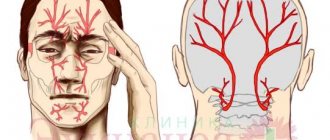The concept of sensory-perceptual process
Definition 1
Sensory-perceptual processes are those processes that, through the human senses, provide a connection between the internal and external world.
A person’s life is a continuous series of actions that accompany him from the moment of birth to the end of his life. Among them there are those that are called perceptual.
Definition 2
Perception is a person’s perception or ability to reflect surrounding objects and situations.
Perception allows us to cognize the surrounding reality and contributes to the formation of an individual understanding of it. Each person perceives the surrounding reality in his own way. Nevertheless, despite different perceptions, people in their development go through certain stages, accompanied by specific ones, i.e. perceptual actions. They are components of the structure of the process of perception and activity.
Are you an expert in this subject area? We invite you to become the author of the Directory Working Conditions
Perception and action are inextricably linked. The formation and development of perceptual actions is carried out during the learning process and is divided into three stages:
- the first stage is associated with childhood, when the child begins to perform actions with unfamiliar objects, an adequate image of the object is formed and subsequently becomes a sensory standard;
- the second stage is associated with the restructuring of sensory processes and, under the influence of practical activities, they become perceptual actions, familiarization with the spatial properties of objects occurs;
- the third stage is characterized by a reduction and curtailment of external actions, which become hidden, occurring at the level of consciousness and subconscious.
By this time, the child has already formed a system of sensory standards, for example, a system of geometric figures. Thanks to standards, sensory-perceptual actions change and their process of image construction turns into a process of identification.
Meaning of Perception
The sense organs are conductors and intermediaries between man and the outside world. It is they (visual, auditory, olfactory, tactile, gustatory) that provide a holistic perception of the environment, receiving irritant signals on the receptor surfaces. As a result, a person receives a complete understanding of objects and phenomena, their properties and qualities, and builds his “relationships” with them.
You may be interested in: Measuring the insulation resistance of an electric motor
In addition to sensations, the perception of the world is provided by thinking, speech, memory, therefore the perceptual activity of an individual is a complex cumulative process that depends on many individual properties of his psyche.
Sensation as a sensory-perceptual process
A person’s knowledge of the world around him begins with sensations, which are the beginning of this knowledge.
Finished works on a similar topic
Course work Sensory-perceptual process 410 ₽ Abstract Sensory-perceptual process 220 ₽ Test paper Sensory-perceptual process 220 ₽
Receive completed work or specialist advice on your educational project Find out the cost
Definition 3
Sensation is a mental cognitive process of reflecting individual properties and qualities of an object in the human mind.
Sensations directly affect the sense organs, through which information about the human environment enters the cerebral cortex. Thanks to sensations, the main external characteristics of an object are reflected - size, shape, color, sound, taste, muscle sensations, etc.
Sensations differ from each other in their quality, intensity, and sensual tone. The physiological basis of sensations is made up of analyzers and their activities. Analyzers consist of perceptive receptors, conducting receptors and central cortical sections of analyzers that process nerve signals coming from the receptors.
Sensations have certain properties - contrast, sensation thresholds, adaptation, sensitization, consistent images.
The contrast is that weak stimuli increase sensitivity, while strong ones decrease it. As for the threshold of sensations, the lower its value, the higher the sensitivity of this analyzer. The absolute threshold of sensations varies among people, and the upper threshold is the maximum value of the stimulus, above which the sensation is no longer perceived.
The discrimination threshold is the minimum difference in intensity of homogeneous stimuli that can be felt. With prolonged exposure to stimuli, the sensitivity of the analyzers may increase or decrease, which is an adaptation.
With increased excitability of the cerebral cortex, the sensitivity of the analyzers may increase under the influence of the activities of other analyzers. This phenomenon is called sensitization. For example, tasters have increased senses of smell and taste.
The continuation of the sensation can be observed when the action of the stimulus ceases, because the receptors are still in a state of excitement for some time - these are sequential images, for example, after a boat trip, a person will still feel rocking for some time.
Sensations based on the nature of the action of the stimulus on the receptors are:
- exteroceptive,
- interoceptive,
- proprioceptive.
Exteroceptive sensations include visual, auditory, taste, tactile and temperature sensations.
Interoreceptive sensations are sensations of pain, balance, acceleration, i.e. they reflect the state of the internal organs.
Proprioceptive sensations, or musculomotor sensations, reflect the movement of the human body. With their help, a person receives information about the position of the body in space, about contraction, stretching, and relaxation of muscles. These sensations are quite complex.
9.1. Violation of perceptual functions with damage to the left and right hemispheres of the brain and with damage to the median structures
In the above-mentioned examination of children aged 6-16 years old, conducted by E. G. Simernitskaya (see Chapter 8), along with an analysis of speech disorders in the same children, a study was carried out of the state of perceptual processes with lesions of the left and right hemispheres of the brain and with lesions of the median structures.
It has been shown that with damage to the left hemisphere, the most pronounced disturbances of visual gnosis are observed during the perception of crossed out and superimposed images (Poppelreiter figures). Lesions of the right hemisphere were accompanied by equally pronounced difficulties in visual perception of realistic images and Poppelreiter figures. Damage to the midline structures (diencephalic-hypothalamic region) led to greater difficulties in perceiving realistic images.
9.1.1. Impairment of perceptual functions due to damage to the left hemisphere of the brain
Visual disturbances with damage to the left hemisphere have a low frequency.
The maximum frequency of violations (in 29% of cases) was observed during the recognition of object images and was associated with damage to the occipital region of the left hemisphere.
These violations arose when it was necessary to identify and correlate several leading features of an object. The children did not rely on the entire set of features when perceiving the image; they singled out one and made guesses based on it. For example, a telephone was recognized as a clock, a table lamp as a mushroom.
The most pronounced violations of objective visual gnosis occurred during the perception of crossed out and superimposed images. They manifested themselves in difficulties in identifying a figure from the background, as a result of which only individual elements of the image were correctly assessed. For example, a hammer was recognized as a stick, a lily of the valley - twigs and leaves, a butterfly - a bat.
In visual-constructive activity (making drawings), mild disturbances were also observed. In young children they were not detected at all, even with damage to the parietal region. With age (after 10 years), the severity of pattern disturbances became increasingly higher.
In older children, the drawings were primitive and simplified. Spatial errors were also recorded when drawing three-dimensional figures.
With damage to the left hemisphere, the characteristic feature was the preservation of a graphic image, which was usually reproduced correctly.
In general, pattern disturbances were more often observed with lesions in the parietal region.
In children of senior school age with damage to the left hemisphere, disturbances in visual-spatial functions were observed (in tests of spatial praxis, copying with reversal, in tests of a clock and a map, etc.).
However, the frequency of their occurrence was low and when they were detected, the nature of these disorders corresponded to those disorders that occur in adults. These disorders, as in adults, were associated with projective or coordinate representations.
It can be assumed that the low frequency of manifestations of disturbances in the perceptual sphere with damage to the left hemisphere is of the same nature as the low frequency of speech disorders. The left-hemisphere components of perceptual activity, which are associated with speech mediation of perceptual processes, are not yet sufficiently formed, which is due to the ongoing formation of the speech system.
9.1.2. Impairment of perceptual functions due to damage to the right hemisphere of the brain
Early lesions of the right hemisphere, which appeared in the first year of life, lead to gross underdevelopment of those functions for which the right hemisphere is dominant (visuospatial perception, visual-constructive and other types of perceptual activity).
When the right hemisphere is damaged in children, disturbances in perceptual processes appear, as a rule, selectively. Often they arise only in the sphere of facial gnosis. Patients do not recognize their own
5-58 relatives, and in less severe cases they complain of poor memory for faces. Just as in adults, these disorders arose with damage to the right occipital region.
As with lesions of the left hemisphere, children with lesions of the right hemisphere showed a violation of object gnosis, but it was of a different nature. In this case, the errors were of the opposite nature: the mushroom was recognized as a table lamp, the clock as a telephone. This indicates the different nature of these violations. When the left hemisphere is damaged, due to a deficiency in the process of sequential analysis of all the features of an object, the details of the picture, it is typical to ignore individual elements of the image - a telephone handset, wires. In the case of damage to the right hemisphere, difficulties in perceiving the perceived object are compensated by analyzing possible options for the image (what could it be?) and, based on a guess, the object is, as it were, supplemented with “missing details.” Therefore, when the right hemisphere is damaged, the errors are very diverse: for example, a ball is recognized as a tomato, an omelette, a watermelon, etc., a coat is recognized as a house without a window, a glass is recognized as a washing machine.
Violations of subject gnosis with damage to the right hemisphere occurred more often than with damage to the left hemisphere.
The same disturbances were found in the perception of crossed out figures (Poppelreiter). But if, with damage to the left hemisphere, difficulties in this task were more pronounced (to a greater extent than when perceiving actually depicted objects), then with any damage to the right hemisphere there were no differences in the perception of figures when presented with each of these two tests. The errors were also of a different nature. With damage to the left hemisphere, each individual fragment of the image was perceived adequately, but its correlation with other features was disrupted, and this led to recognition based on an incomplete set of features. In the case of damage to the right hemisphere, on the contrary, difficulties in perceiving individual fragments were compensated by the emergence of side, random semantic connections that were not focused on the leading feature: jug - bread; butterfly - ribbon, pear, turnip, etc. This led to recognition focused on a redundant set of features that went beyond the image.
Thus, disturbances in object perception with damage to the right and left hemispheres were of a qualitatively different nature, due to the specific mechanisms of information processing in the left and right hemispheres - successive and simultaneous, respectively.
Lesions of the right hemisphere were also clearly manifested in the phenomenon of “left-sided inattention” - ignoring stimuli located in the left half of the visual field. This violation could manifest itself in the form of ignoring all stimuli located in the left half of the visual field; in other cases, the complete image disintegrated, and a conclusion about it was made on the basis of only signs located on the right. More often than not, only the extreme left elements were ignored.
Violations of color perception were recorded in isolated cases.
There were no impairments in animal recognition (in the presence of facial agnosia).
Disturbances in perceptual processes with damage to the right hemisphere were clearly manifested in the sphere of spatial representations, manifesting themselves in difficulties in spatial orientation.
In visual-constructive activity, when making drawings, disturbances were often in the nature of a gross defect, which was never observed with lesions of the left hemisphere.
This was most clearly evident when drawing three-dimensional figures. Often there was a disintegration of not only spatial representations, but also visual images in general.
A distinctive feature of right-hemisphere disorders (as opposed to left-hemisphere disorders) was that these disorders were not compensated for by copying.
Violation of the pattern occurred in 47% of cases and was maximally manifested in cases of damage to the right parietal region.
With damage to the right hemisphere, disturbances in topological ideas about an object occur (which does not happen with damage to the left hemisphere), as well as disturbances in ideas about the movement and transformation of an object.
At the same time, a comparison of disturbances in spatial representations in children and adults reveals some differences. They manifest themselves in the fact that in childhood the right hemisphere provides a wider range of spatial representations than in adults. For example, when the right hemisphere is damaged in children, both projective ideas and ideas about the coordinate system suffer (in adults, such disorders are observed only when the left hemisphere is damaged). In children, similar disorders occur equally with damage to both the left and right hemispheres.
In general, we can talk about the leading role of the right hemisphere in perceptual processes, which manifests itself already in childhood.
The absence of special differences in these disorders in children of primary and senior school age indicates that the dominance of the right hemisphere in perceptual processes occurs early.
9.1.3. Disturbance of perceptual processes with damage to the median structures
As noted above, damage to the hypothalamic-diencephalic region of the brain has traditionally been associated with a disruption of ascending activating influences, which led to changes in the normal functioning of the cortex.
Neuropsychological studies have shown that suffering in this area of the brain leads not only to disturbances in the verbal non-sensical sphere (pathological inhibition of traces by interfering influences, which were described above), but also to disturbances in the perceptual sphere.
Violations of objective gnosis come to the forefront here, which appear especially clearly when perceiving realistic images. This is a qualitative difference between the symptoms of disorders in this area from the symptoms characteristic of damage to the left hemisphere (in this case, the perception of Poppelreiter figures suffers more than the perception of realistic images), and from the symptoms of damage to the right hemisphere (in this case, the perception of realistic and schematic images suffers approximately equally ).
Just as with impaired auditory-verbal memory, perceptual impairments were more common with intracerebral lesions (in the region of the 3rd ventricle) than with extracerebral tumors.
The frequency and severity of disturbances in the perceptual sphere with damage to the hypothalamic-diencephalic region significantly exceed the same disturbances with damage to the left hemisphere and practically do not differ from right-hemispheric lesions.
Most often, these disorders occurred before the age of 10 years, and to a lesser extent after 10 years.
A distinctive feature of visual perception disorders was that they were most clearly manifested when perceiving images of “living” objects (in particular animals). In general, in childhood, impairments in the recognition of animal images are detected regardless of object and facial agnosia. This may indicate that these perceptions of these objects have different brain organizations.
For example, mistakes were typical when: a dog is recognized as a horse or a cow; hare - like a kitten, cat; chicken is like a fish; a frog is like an owl. Such errors are extremely rare in hemispheric disorders, as a rule, only in cases where the pathological process in the hemispheres also affected the median structures.
Another important symptom is a violation of color gnosis (17.7% of cases).
Often coloring does not make it easier, but rather complicates the process of identifying an object. For example, orange is recognized as watermelon, cabbage; green watermelon - like orange, tomato.
Presenting colors outside the object increases the difficulty of their identification. The largest number of errors was in the perception of green, which was perceived as red, brown, yellow, gray, black. There were many errors in the perception of red, pink, and orange colors.
A characteristic feature was that errors could vary both among different patients and within one patient upon repeated presentation of stimuli.
Violation of color gnosis was detected mainly when naming colors, while the choice of a given color was available. When classifying color objects, errors occurred in distinguishing between red and green stimuli and attempts to place them in one group.
As E. G. Simernitskaya notes, the identified violations of color gnosis do not fit into the picture of congenital color anomalies, which are accompanied by a certain type of errors. The variability of errors, the absence of color aphasia, and the isolated manifestation of this disorder indicate that the disturbance of color perception in children with damage to the midline structures has a different structure than that described in adults with damage to the left or right hemisphere.
In its manifestations, this disorder is most similar to the symptom of “anomia”, which is part of the “split brain” syndrome, when interhemispheric interaction between the structures that perceive visual information and which provide its verbal designation is disrupted. This usually occurs when the posterior parts of the corpus callosum are cut or damaged, that is, when interhemispheric connections are disrupted. But damage to the hypothalamic-diencephalic region does not lead to disorders of the corpus callosum. Only the anterior commissure is adjacent to this area, which plays an important role in interhemispheric transfer in animals.
It can be assumed that in the early stages of ontogenesis it is the anterior commissure that performs the function of such transfer. E. G. Simernitskaya (1985) gives examples that may testify in favor of this hypothesis.
In the first case, patient S., 12 years old, was operated on for a tumor of the third ventricle affecting the optic nerves and chiasm. He had a sharp decrease in vision in the left eye, as well as bitemporal hemianopsia. This led to the fact that perception remained intact only from the left half of the visual field in the right eye, from where information is transmitted, respectively, to the right hemisphere. Scheme of disturbances in the processing of visual information resulting from organic brain damage in patient S.
A neuropsychological examination of the patient revealed a number of visual perception disorders associated with the difficulty of correctly naming presented objects.
The naming of objects was of a generalized, undifferentiated nature: carrots were recognized as a vegetable; squirrel - like some kind of animal; coat - made of clothes, probably something.
The naming of “living objects”—animals, which requires reliance not only on generalized but also specific features—is practically inaccessible. The same image, upon repeated presentation, was called differently: the chicken was recognized as a cat, a puppy, an insect; a snake is like a dog, a heron, a dove; a fish is like a bird, a snake.
When naming colors, for example, red could also be called variously green, yellow, gray, brown, orange.
When speech mediation was excluded, visual perception was practically not disturbed: the choice of a given image from a group of images was carried out correctly; When comparing colors, there were errors only in the choice of red and green.
In the second patient K., from the age of 13, a large tumor in the chiasmalosellar region covered, in particular, the chiasm and optic nerves. When he developed bitemporal hemianopsia, it was possible to achieve the effect of supplying information either to the LA (viewing only with the left eye) or in the PP (viewing only with the right eye).
When viewing images with the right eye (information was transmitted to the right hemisphere), errors of the same type were observed as in the previous case.
When perceiving with the left eye (information entered the left hemisphere), the errors were of a different nature. The evaluation of images was based not on semantic, but on random features (including color): brown squirrel - bread, shoe; green frog - cabbage; cat - coat, suit.
When perceiving colors, contrasting colors were not mixed (red - green, orange - green), difficulties arose when differentiating similar colors located within the same color range (yellow - brown, red - cherry, etc.).
Similar disturbances were observed in other children with the same localization of the lesion.
It is clear that damage to the midline structures in childhood leads to peculiar disorders that do not occur with damage to the cortical zones and are not observed in adults.
The nature of the symptoms confirms the similarity of the disorders with the phenomenon of “anomia”, which arises due to insufficient “information” from the left hemisphere to the right.
The “split brain” model discussed above also allows us to see that visual perception suffers when information enters both only the left and only the right hemisphere. This means that normal perception cannot be provided by only one hemisphere.
Thus, the uniqueness of gnostic and spatial disorders with damage to the diencephalic region in childhood can be explained by a violation of interhemispheric transfer.
The deficit of interhemispheric interaction with damage to the midline structures manifests itself not only in visual perception, but in spatial representations, for example, in drawing. In this case, coordination between the afferent and efferent components of visual-constructive activity suffers.
A violation of the integral scheme of the image occurs when individual fragments are reproduced in isolation, on their own, without connection with each other. This manifests itself both in independent drawing and in copying. Even normal reproduction of individual fragments is accompanied by the impossibility of combining them into a single scheme.
These data confirm the already noted fact that none of the hemispheres, being isolated, can ensure the full flow of perceptual functions.
speech dysfunction – previous | next – PF disorders in epilepsy
Contents – Mekadze Yu. V. Neuropsychology of childhood
neuropsychologist | pediatric neuropsychologist and defectologist | diagnostics and correction
Game and development
Perceptual actions in preschoolers are a fruitful connection between the actions of orientation and exploration with the actions of execution. And the unity of visual and manual actions ensures the accuracy of perceptual analysis.
Children learn about the world around them through play. While playing, they actively process and assimilate new information. Thus, they accept social norms and rules for successful adaptation in society.
In preschool children, the following types of perceptual actions are distinguished:
- identification actions (object identification);
- actions in relation to the standard (comparing the properties of the object with the standard);
- modeling the actions of perception (by mastering productive activities, the child learns to create new objects: modeling, drawing, inventing).
Does an adult have perceptual activity?
Since perceptual actions are actions of learning and cognition, it may seem that they are unique to childhood. However, this is not so: every time an adult learns something new (a hobby, a new profession, foreign languages, etc.), a system of perceptual actions is activated, which helps to quickly master new knowledge and skills.
Man is a unique creature, his possibilities are limitless, and all this is thanks to consciousness and psyche. It is they who distinguish man from all life on the planet. Only a person is capable of voluntarily regulating his activities in accordance with his desires. Human activity is not chaotic and unsystematic, but is part of the structure of consciousness and thinking. Until now, scientists all over the world are studying the human psyche, making new discoveries, but it still remains a mystery.
The importance of the perception system for humans
Scientists have been studying higher mental functions of humans (thinking, memory, voluntary action) for many years. The relationship between the system of perception and activity and the development of human thinking has been proven. In turn, thinking has a significant impact on a person’s condition, his abilities and capabilities. Perception is one of the highest mental functions of a person.
In order to live, a person needs to constantly reflect the surrounding reality and respond to the perceived information. Perception provides an individual and at the same time adequate reflection of reality. This is especially important for solving perceptual problems. Perceptual actions in the process of perception play an important role; they ensure the full development of the human psyche.
Simply put, to be healthy and happy, a person needs to be involved in some kind of activity. The brain is designed in such a way that it constantly needs to process and assimilate new information, otherwise it begins to become “lazy.” And a “lazy brain” is the first step to the development of dementia.
Levels
Perceptual action can be divided into four levels:
- detection (characterized by the detection of a stimulus);
- discrimination (at this level perception occurs with the subsequent formation of a perceptual image);
- comparison or identification (at this level, the perceived object is identified with the image that is stored in memory; or several objects are compared);
- identification (the corresponding standard is extracted from memory and the object is categorized).
Human sensory-perceptual system
Sensory processes are sensations. A person constantly feels the influence of the external world on his body: he sees, hears, smells and tastes, feels tactile and temperature effects on his body. It also senses processes occurring inside the body: hunger, pain, excitement or weakness, etc.
The sensory-perceptual system is constantly developing and improving in the process of human life. This is necessary for a person’s successful adaptation to the outside world. A person’s abilities and capabilities depend on the quality of the perception system.
This is especially noticeable when compared with people who have disturbances in the development of perception. The life of a person with disabilities (blindness, deafness, muteness, etc.) differs from the life of an absolutely healthy person. Perceptual actions play a significant role here: the more minor the perception defect, the easier it is to correct and possibly correct it. This is done by specialists - defectologists.
Perceptual systems
In the process of activity, a person constantly needs to solve some problems that require the perception of the most adequate reflection of the situation. Human perceptual systems are designed to solve these problems. These include:
- visual system;
- auditory;
- musculocutaneous;
- olfactory-gustatory;
- vestibular.
All of them provide the brain with the necessary information, which is used for the normal functioning and development of a person, both physically and mentally.
Note to parents
Forming a system of perceptual actions in a child is primarily the concern of parents. Firstly, they need to closely monitor the health of the baby’s sensory organs, otherwise their insufficient functioning will make it difficult to perceive the features of objects of cognition. Secondly, one should not rely only on educators and teachers: the development of perceptual actions is one of the goals of family education in the early stages of a child’s life. To do this, we need to help him thoroughly examine objects (what they sound like, how they are structured, what parts they are made of, what they feel, taste and smell), teach him how to operate them, and enrich his vocabulary with nouns (what is this?), adjectives (which one? ), verbs (what does it do?).
Children should be shown pictures and techniques of drawing, modeling, design, and practice comparing objects according to different parameters.
The main method of teaching toddlers and young children is play. Children love playing and doing activities together with their parents. Emotional substantive communication with them stimulates the child’s development of perceptual actions.
Source









